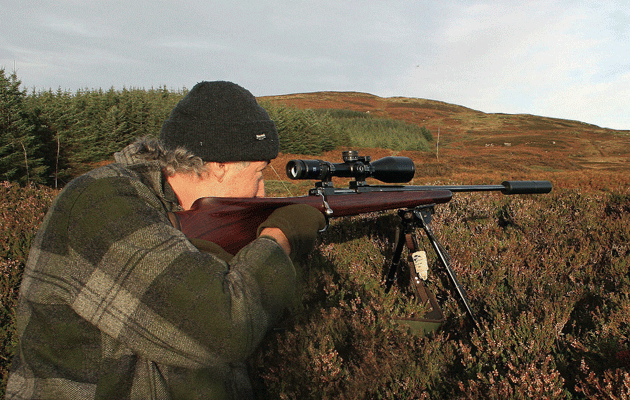Win CENS ProFlex DX5 earplugs worth £1,149 – enter here
Survey confirms deer culling best practice
A new British Deer Society survey provides key pointers for deer culling best practice to help you achieve cleaner kills when stalking

Stability, time available and ammunition are the key factors when it comes to ensuring a clean kill when deer culling, according to a study carried out by the British Deer Society. The society has welcomed the results, which support the principles of its existing best practice and also provide clear pointers for improving deer welfare by increasing the chances of a clean kill.
The study, published in the online journal PLOS ONE on 15 October, assessed the relative importance of a number of factors affecting accuracy of shooting when stalking deer. As well as point of aim, distance and comfort, these included the time available in which to take a shot, the sex of the deer, how well concealed the target was, whether the stalker used a rest, how the deer presented itself, bullet weight, knowledge of the stalking ground, the amount of shooting practice undertaken and any stalking qualifications held.
The study looked at both the probability of hitting a target animal with a first shot and the probability of a shot killing rather than wounding a beast. It was compiled using anonymised data submitted by 102 stalkers on the outcomes of 2,281 shots and with scientific support from the Game & Wildlife Conservation Trust.
Of the deer recorded, 95.5 per cent (2,179) were hit with the stalker’s first shot, and 93 per cent of those hit deer (2,026) were killed outright with seven per cent (153) wounded but not killed by the first shot. Of the wounded deer, fewer than one per cent were lost or escaped (28), and the rest (125) were killed with subsequent shots. Clean misses were relatively rare, accounting for less than five per cent of all shots recorded.
An uncomfortable or unstable firing position was the factor most likely to result in a clean miss. This was followed by the point of aim chosen by the stalker: shots aimed at the chest had a 97 per cent success rate, as outlined in deer culling best practice guides; those aimed at the lower neck 89 per cent; those aimed at the head 85 per cent; and those at the high neck only 81 per cent.
Next in importance for connecting with the target was range. The likelihood of a miss increased in direct proportion to the stalker’s distance from the deer: 95 per cent of shots at less than 75m hit; 91 per cent of shots at between 75m and 149m; and only 83 per cent of those at distances of more than 150m. Hurried shots were also less likely to hit; hinds and does were missed more often than stags or bucks.
Unsurprisingly, the results also showed that less experienced stalkers are more likely to miss than those who shoot more often and/or hold stalking qualifications.
When it came to the probability of killing a beast rather than wounding it, comfort and steadiness of shooting position were again the most significant. Shots taken from sticks were most likely to result in a kill (96 per cent), followed by those using bipods (93 per cent). Freehand shots and shooting off elbows were the least likely to be successful. Second in importance was the time available to take the shot, and, when time was in short supply, distance also became critical (though was of less importance when more time was available).
Bullet weight also had a marked effect: shots taken with bullets weighing less than 75-gr were almost a third less likely (66 per cent success rate) to result in a clean kill than those weighing between 75 and 99- gr (94 per cent). Heavier bullet strikes resulted in a kill between 88 and 91 per cent of the time. Moving deer were more likely to be wounded than those standing still and clean kills were more likely on ground that was well-known and stalked regularly.
Related Articles
Get the latest news delivered direct to your door
Subscribe to Shooting Times & Country
Discover the ultimate companion for field sports enthusiasts with Shooting Times & Country Magazine, the UK’s leading weekly publication that has been at the forefront of shooting culture since 1882. Subscribers gain access to expert tips, comprehensive gear reviews, seasonal advice and a vibrant community of like-minded shooters.
Save on shop price when you subscribe with weekly issues featuring in-depth articles on gundog training, exclusive member offers and access to the digital back issue library. A Shooting Times & Country subscription is more than a magazine, don’t just read about the countryside; immerse yourself in its most authoritative and engaging publication.







